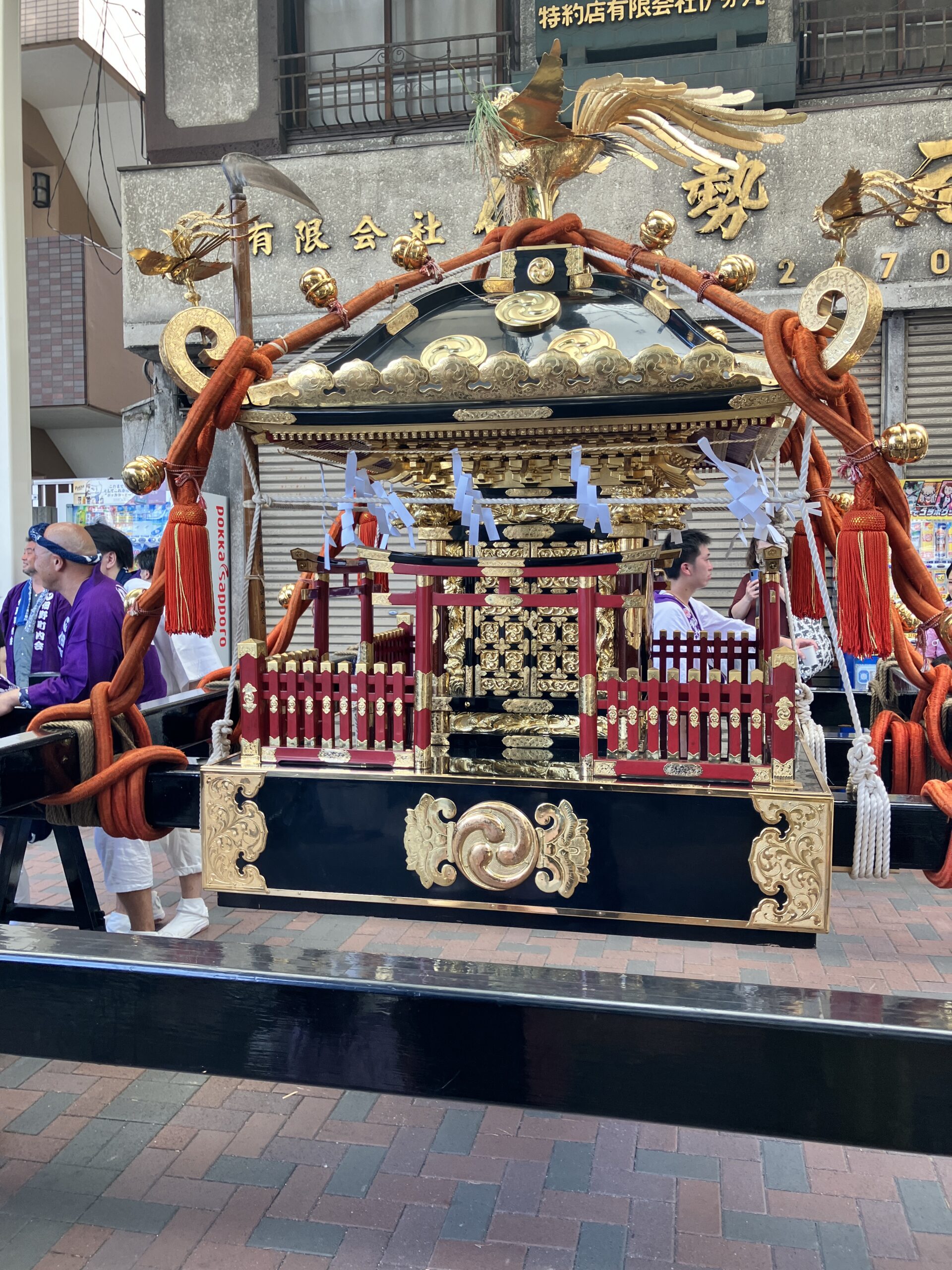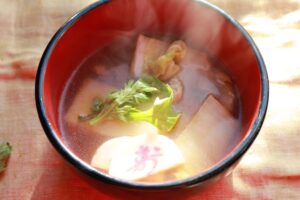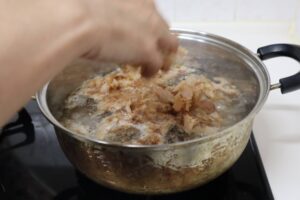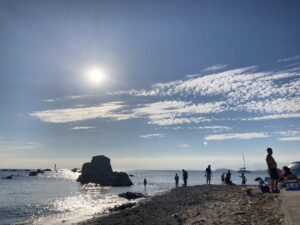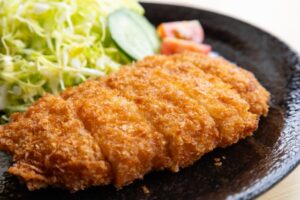Pīhyara Pīhyara, Don Don Don
When you hear the sound of flutes and drums, it marks the beginning of the summer festival season.In Japan, the festivals are held across the country from July to August.
Today, let’s introduce local summer festival where you can participate with your children.
The Meaning of Summer Festivals
Obon Events
The meaning of summer festivals primarily has two aspects.
One is that summer festivals are held as part of Obon events.It is a Buddhist tradition where we welcome and honor our ancestors, expressing gratitude for our existence today.
Offerings are made at the family altar, and visits are made to ancestral graves. In the community, people carry portable shrines (mikoshi) and parade through the streets.
A Place for Community Interaction
Secondly, it serves as a place for community interaction.
In rural areas, especially, people who have moved to the city return for summer festivals, making it a valuable opportunity to reunite with people from their hometown.
Sacred Mikoshi
Do you know what a mikoshi is?
A mikoshi is a portable shrine that carries a deity.
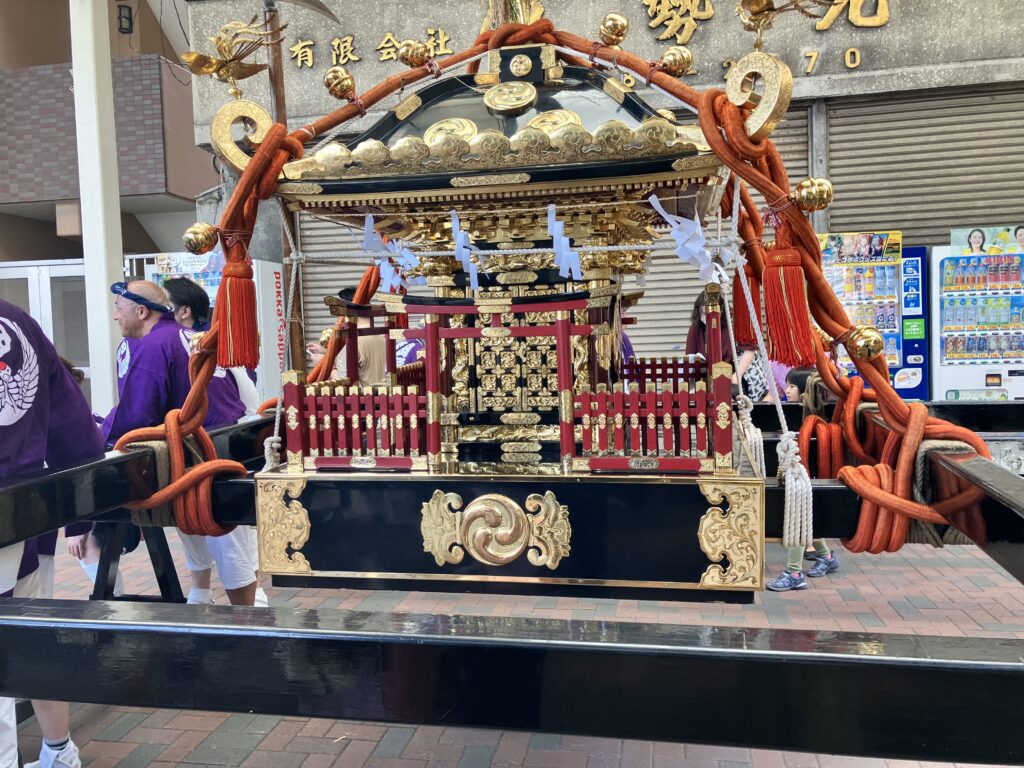
It comes out from the shrine, visits the local people, and parades through the area, cleansing impurities and warding off misfortune before returning to the shrine.
Taking the portable shrine out of the shrine is called “Miyadashi,” and returning it is called “Miyairi.” Both are sacred rituals.
The portable shrine is heavy and cannot be carried by one person. It requires over 20 adults, particularly strong men.
When carrying it, people chant “Wasshoi,” “Seiya,” or “Soiya” as they walk. This is done to uplift the spirits of the gods.
At the same time, since many people are carrying the heavy shrine on their shoulders, the chants help them keep in rhythm as they walk.
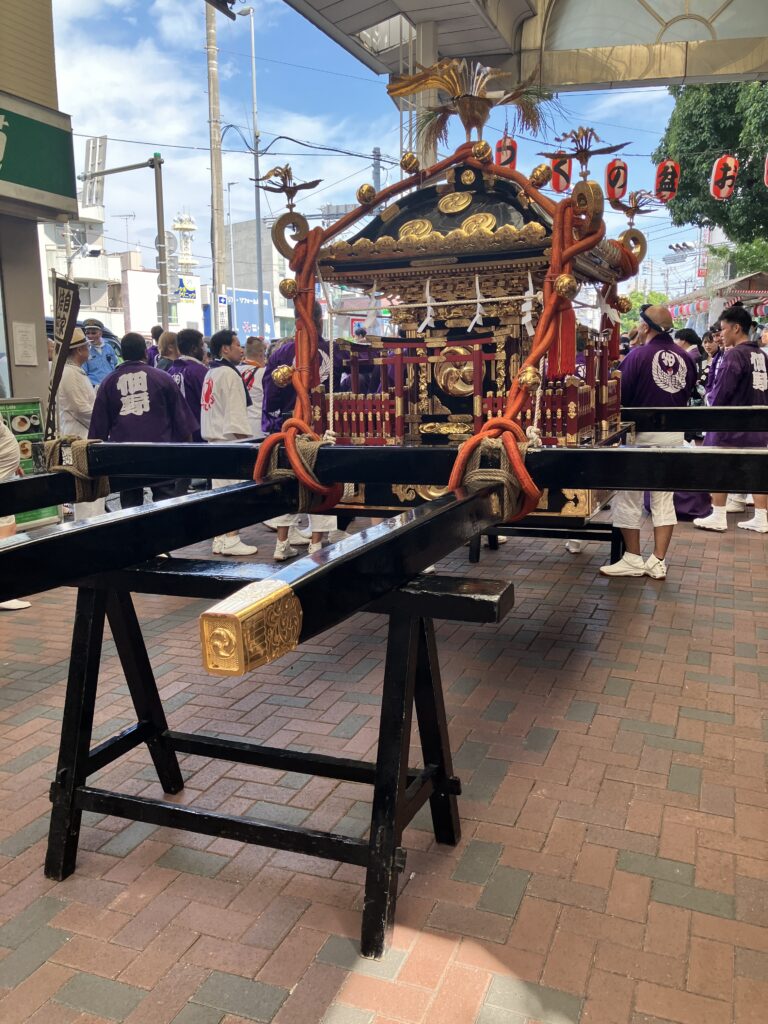
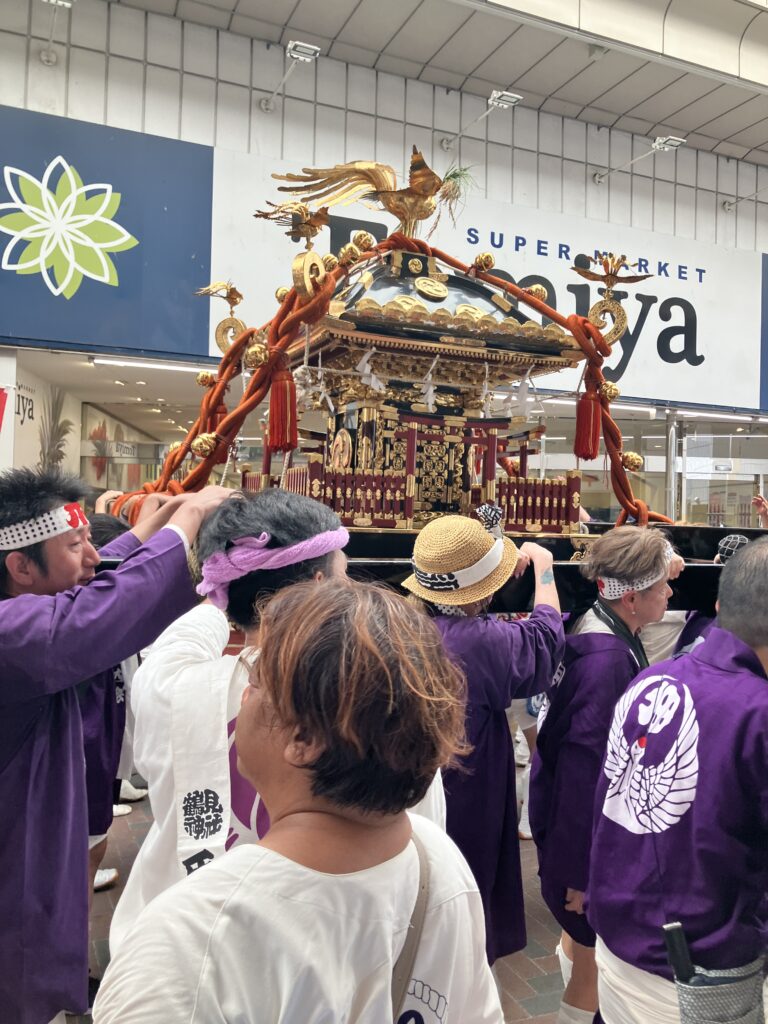
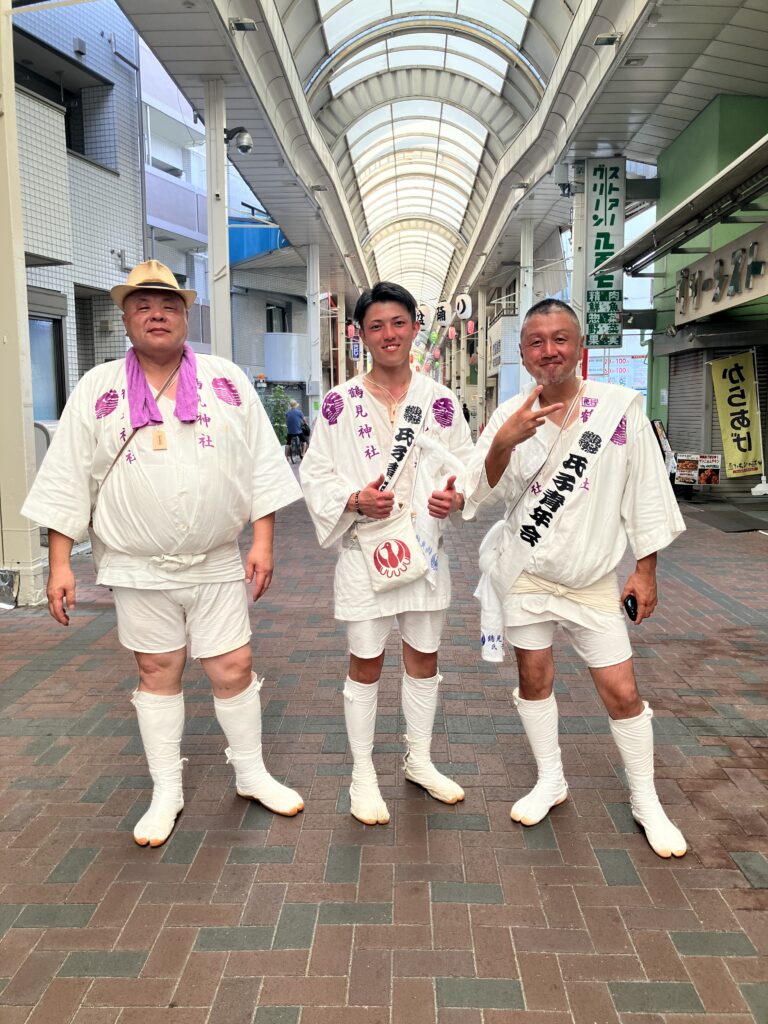
Children’s Mikoshi
There is also something called a “Children’s Mikoshi.” This is a small-sized portable shrine placed on a cart called a “dashi” and moved around.
Children pull this small shrine through the neighborhood.It’s customary for the children to be rewarded with sweets after completing the procession.
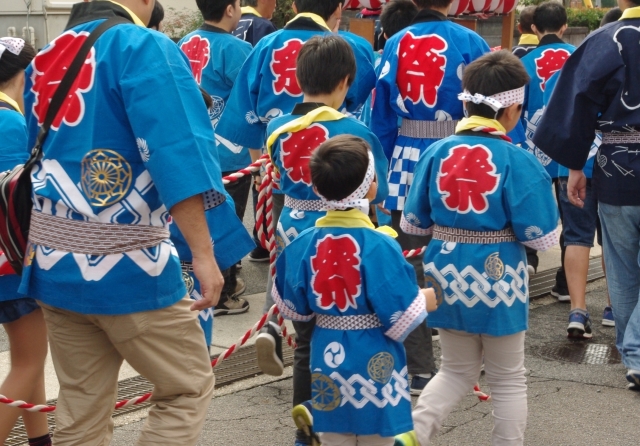
If You Want to Carry the Mikoshi
If you’d like to participate, ask a neighbor and have them connect you with the festival organizers. Most areas are facing a shortage of people to carry it, so you’ll likely be welcomed.
Summer Festivals
Local summer festivals are often held on Saturday or Sunday nights in August. The schedule is usually posted on bulletin boards along the streets. (The day for carrying the mikoshi and the summer festival may be the same or on different days.)
Let me introduce what takes place at the summer festival.
Bon Odori
Bon Odori is a dance that creates traditional rhythms with drums and flutes, performed in a circle. It features slow movements, with a slight bend at the waist and active arm motions. Its origins date back to the Muromachi period, when people danced while chanting Buddhist prayers.
The dance has set movements, but you can just copy what the people around you are doing. Japanese people do that too.
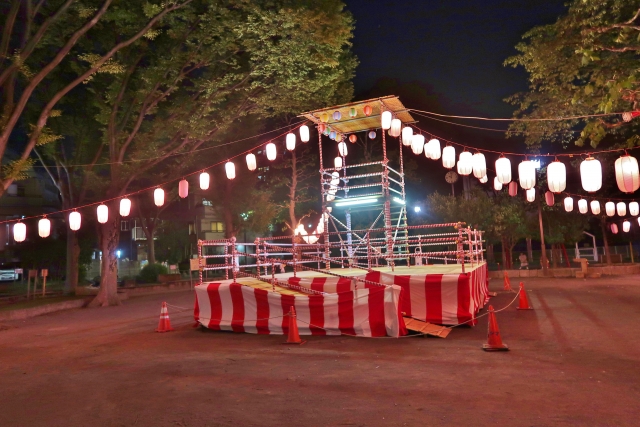
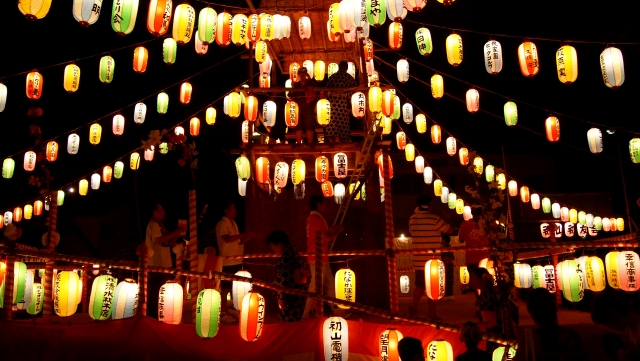
Yukata
You can wear any clothes to the summer festival, but wearing a yukata will make it even more enjoyable.
It is a traditional Japanese wear on hot summer days. It is made from a single piece of cotton fabric wrapped around the body and secured with an obi. Women’s yukata, in particular, are often colorful.

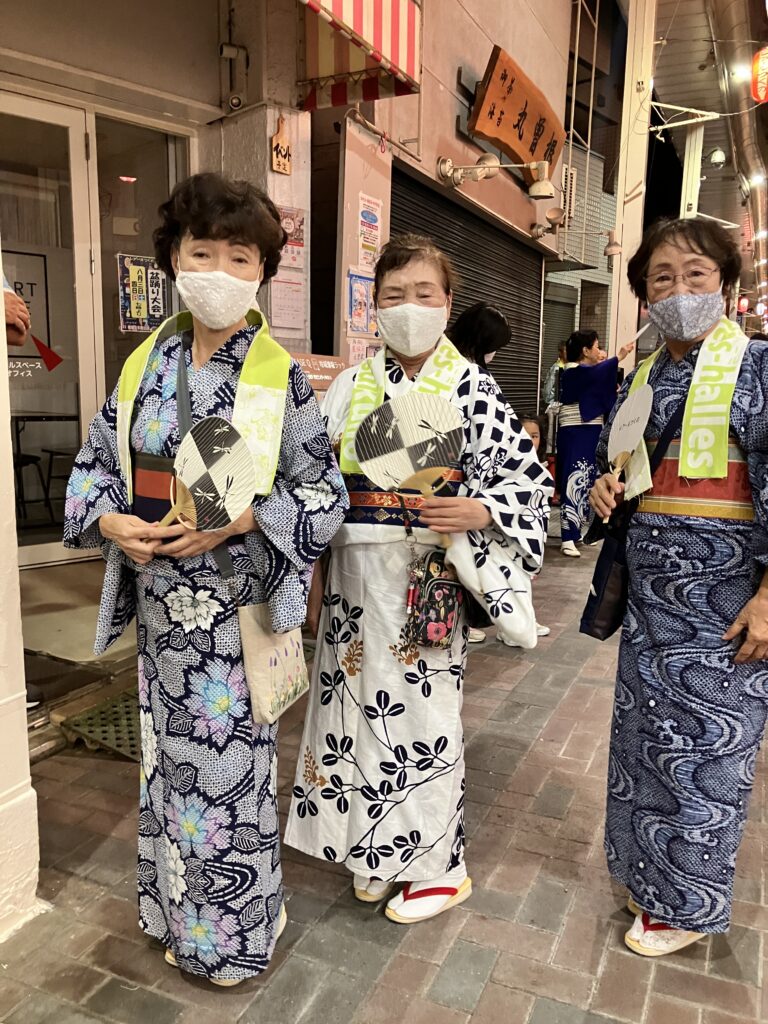
If Adults Want to Wear a Yukata
It’s a good idea to rent a yukata and have someone help you put it on. In some cases, local volunteer groups offer dressing services, or you can pay around 5,000 yen at a beauty salon to have it done.
For Children
Recent children’s yukata are divided into separate top and bottom pieces, similar to regular clothes. This makes it easier for mothers to dress their children. They can be purchased starting from around 3,000 yen, so trying one on for summer memories can be a great idea!
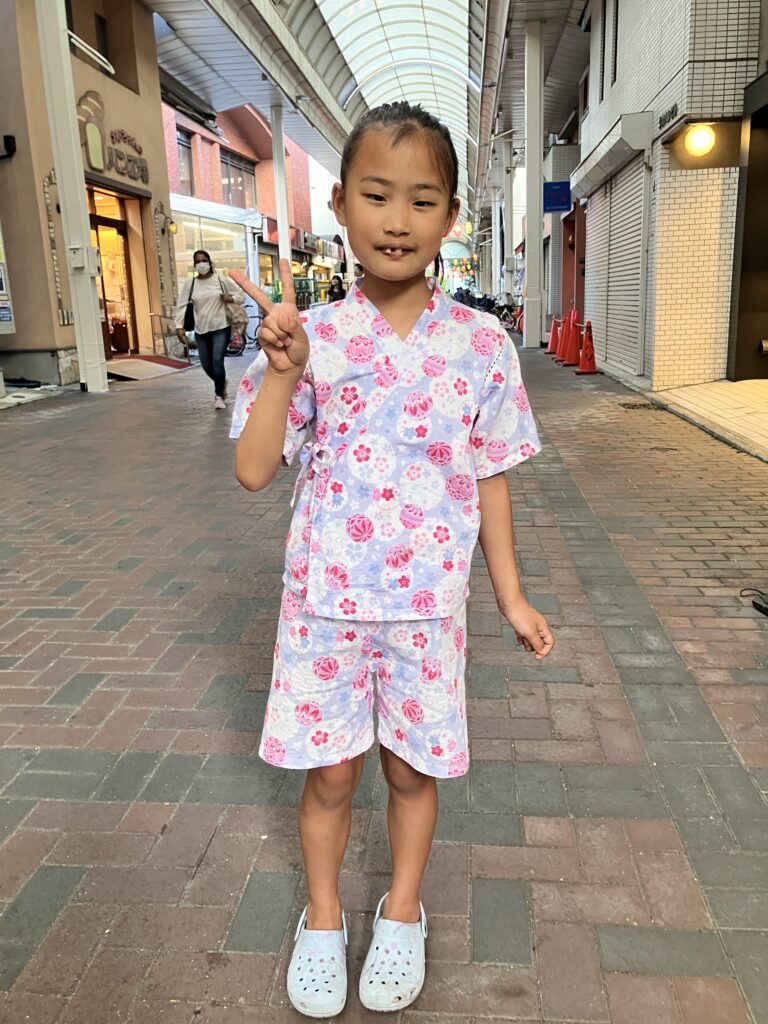
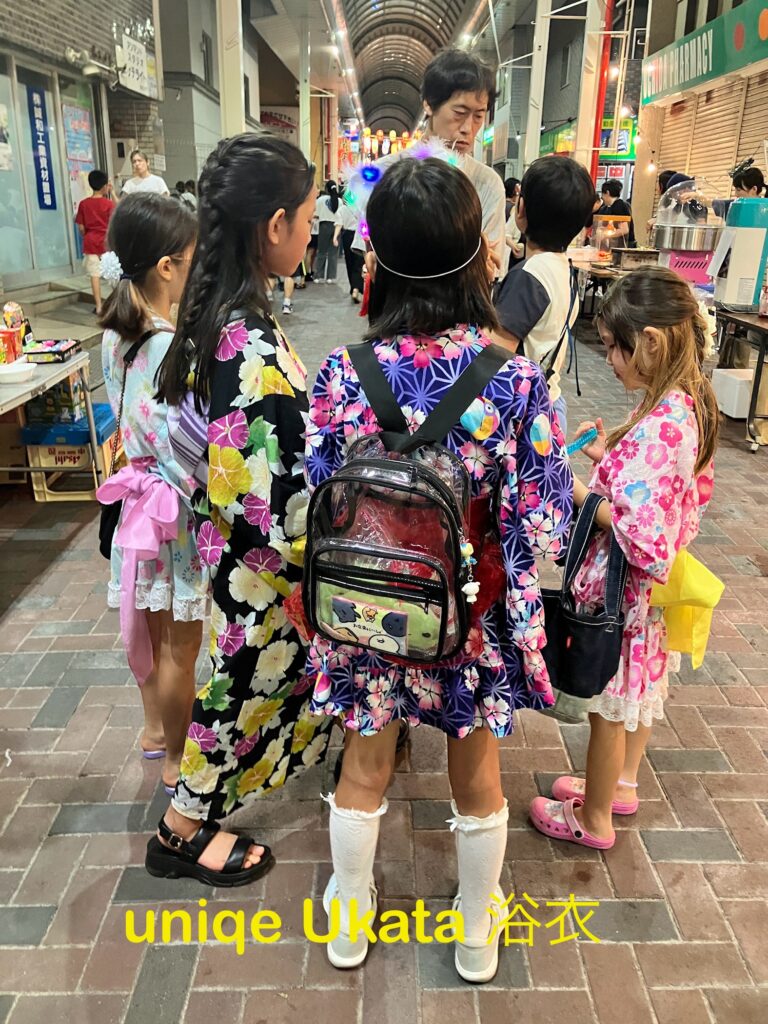
Food
Various food stalls are set up, allowing you to enjoy different kinds of food.
Shaved Ice
Shaved ice is fluffy ice that is topped with sweet syrup. The syrups are colorful, with classic flavors like yellow lemon, red strawberry, and blue blue Hawaii. Children can choose their favorite syrup. It can be purchased for 100 to 200 yen
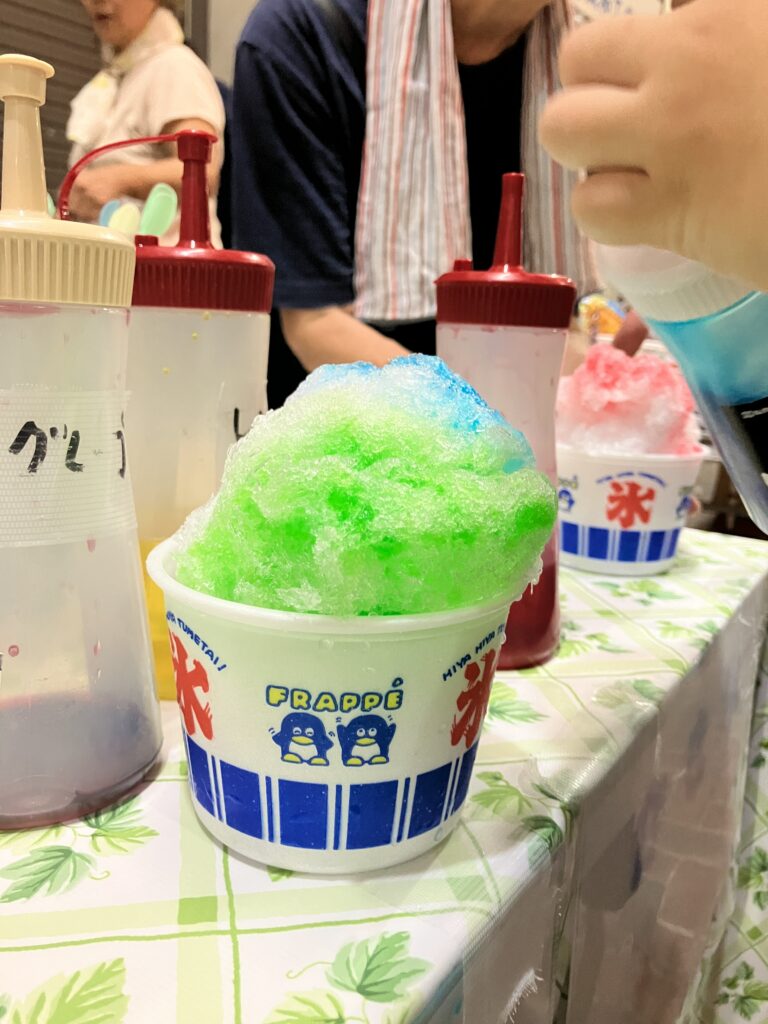
Ramune
Ramune is a carbonated drink made with sweeteners and flavoring. The bottle is sealed with a glass marble that pops when you push it. It’s sold cold and costs about 100 yen per bottle.
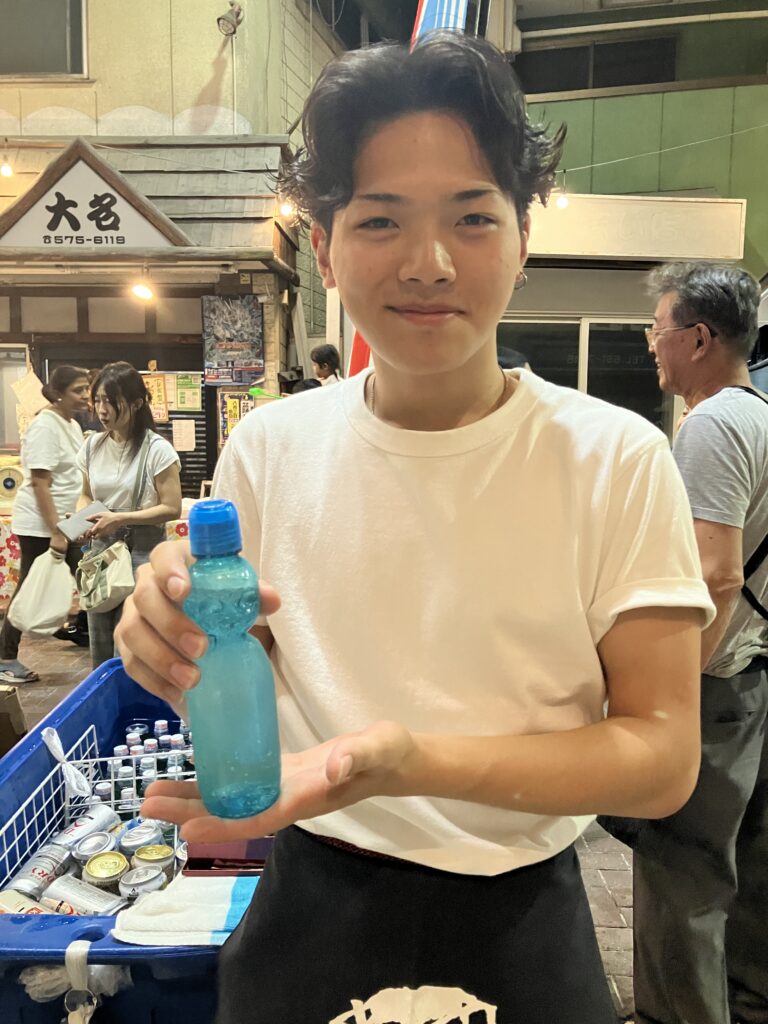
In addition, you can find foods like frankfurters, yakitori, popcorn, and yakisoba for sale. Beer is also available.
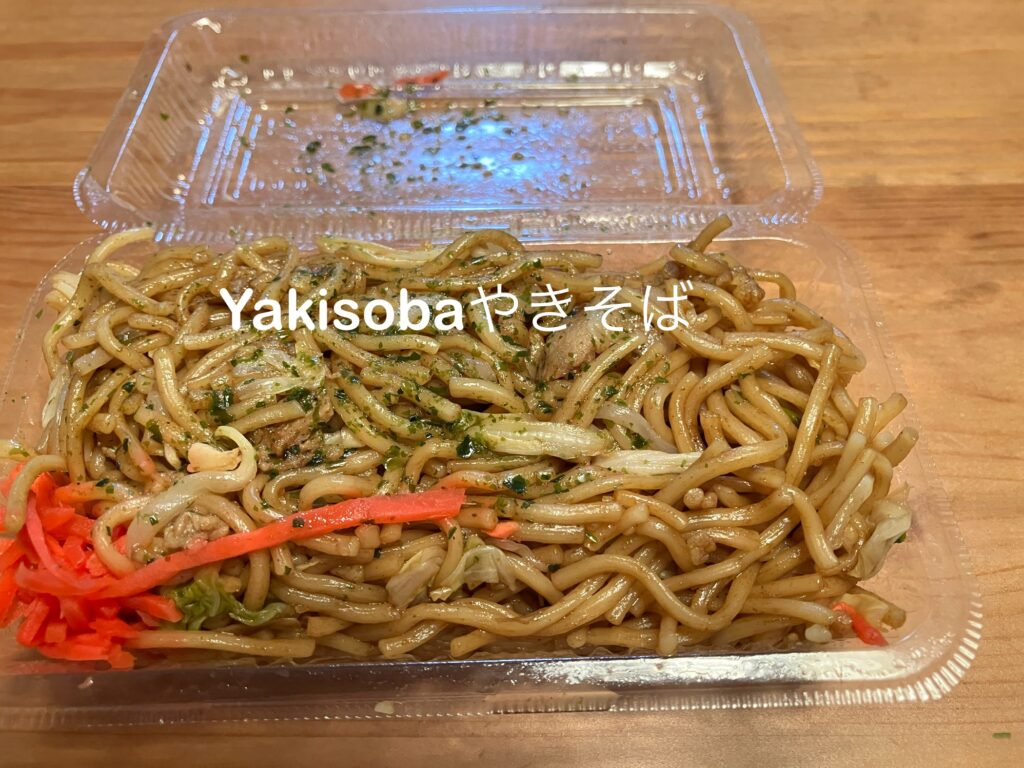
Toys
There are many toys that children will enjoy.
For example, there are masks featuring popular characters. When “Kimetsu no Yaiba” was trending, fox masks became very popular.
Other toys include glow-in-the-dark sticks and glowing poop toys.
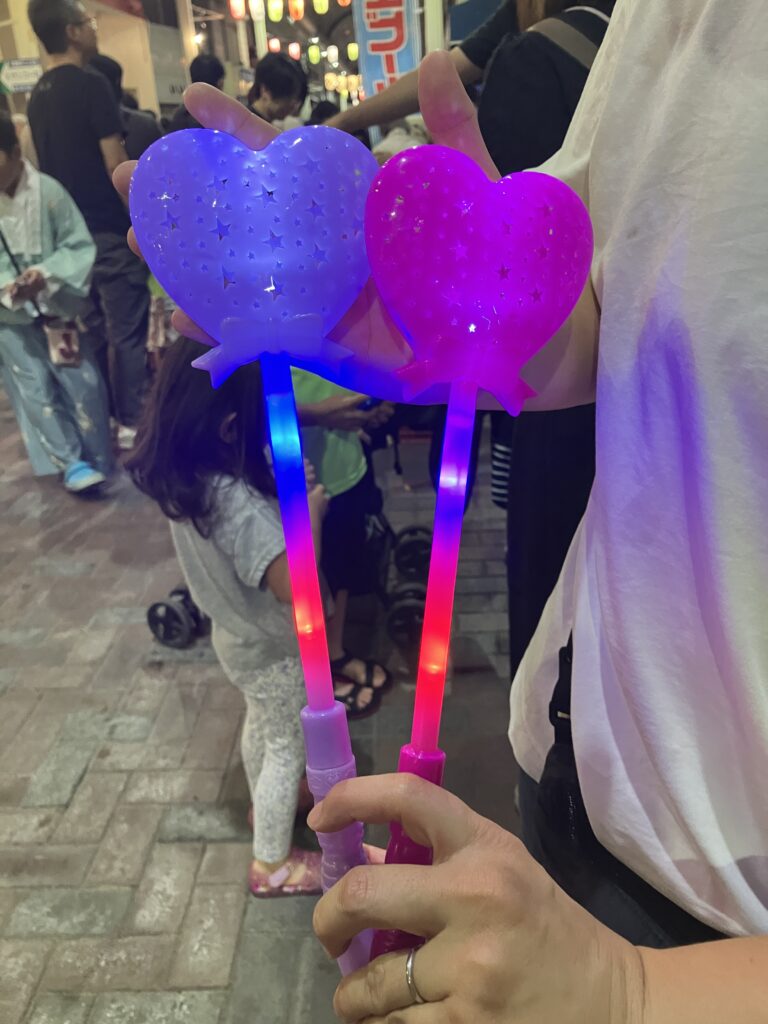
Yo-yo are also popular. It is a toy made by filling a rubber balloon with water and air, then sealing it with rubber. You can play with it by bouncing it up and down using its elasticity.
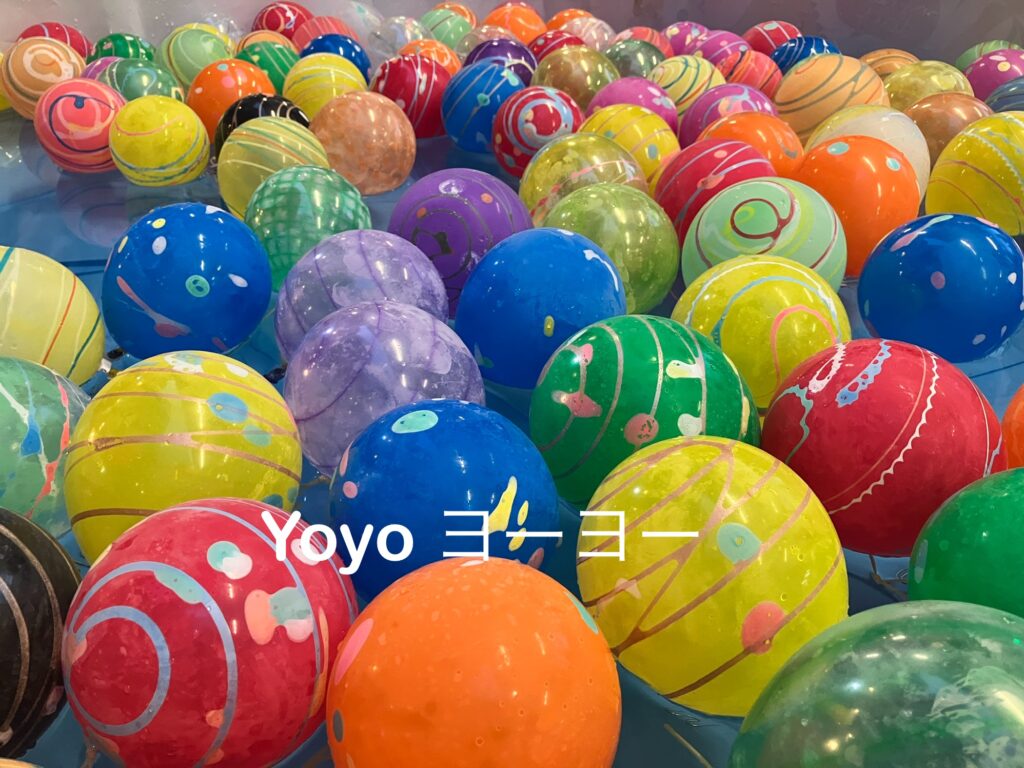
Additionally, you can enjoy games like shooting and ring toss.

In this way, it’s a lively summer festival, perfect for creating summer memories for children. Be sure to check it out!

